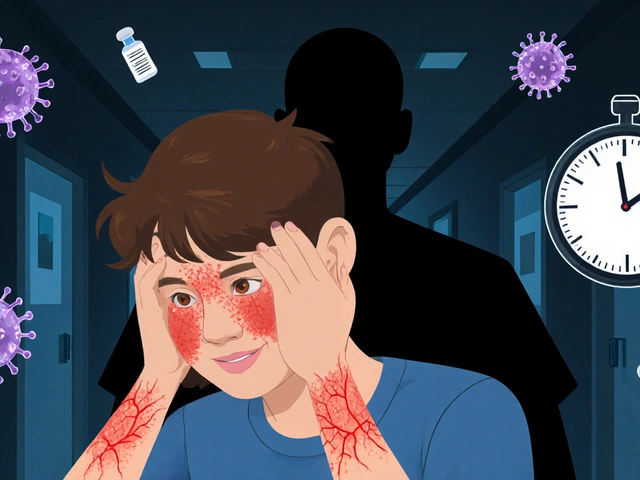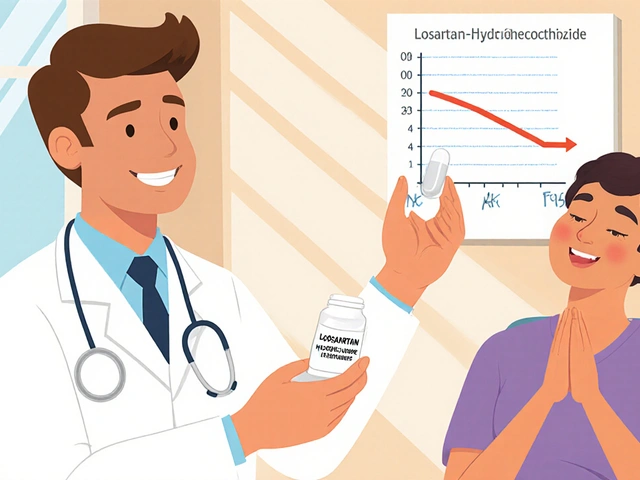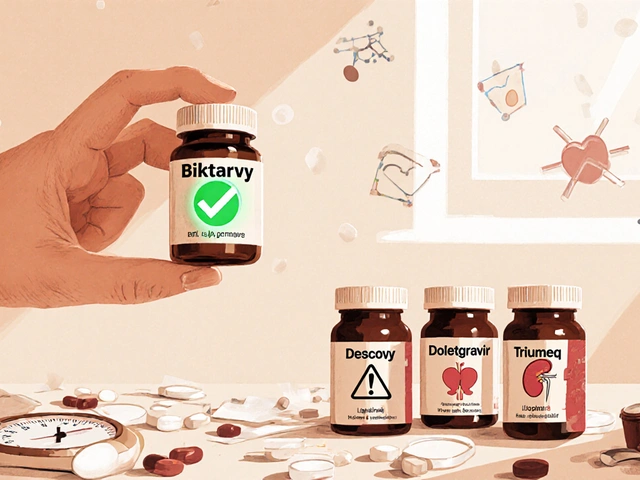Tacrolimus Blood Level Checker
Check Your Tacrolimus Level
Enter your current tacrolimus blood level to see if it's within the recommended range for your organ transplant type.
When you’ve just had a life-saving organ transplant, the last thing you expect is to feel like your body is betraying you. Tremors in your hands. A pounding headache that won’t quit. Trouble sleeping. These aren’t signs of rejection-they’re signs of something else: tacrolimus neurotoxicity. And it’s more common than most patients or even doctors realize.
What Is Tacrolimus Neurotoxicity?
Tacrolimus is a powerful immunosuppressant used to keep your new organ from being rejected. It’s been the gold standard since the mid-1990s, especially after studies showed it cuts acute rejection rates by 20-30% compared to older drugs like cyclosporine. But it comes with a hidden cost: neurological side effects. About 20-40% of transplant recipients experience some form of neurotoxicity. That’s roughly 1 in 3 people. The most common symptoms? Tremor and headache. In fact, 65-75% of patients who develop neurotoxicity report shaking hands or fingers-sometimes so bad they can’t hold a cup or write a note. Headaches show up in nearly half of these cases. They’re not just ordinary headaches. Patients describe them as crushing, constant, and unresponsive to regular painkillers. Less common but more serious symptoms include confusion, dizziness, trouble speaking, vision problems, or even seizures. In rare cases, it can lead to PRES (Posterior Reversible Encephalopathy Syndrome), a condition visible on MRI scans where fluid builds up in the back of the brain. Left unchecked, it can cause permanent damage.Why Do These Symptoms Happen?
You might think, “My blood level is in range, so why am I still having tremors?” That’s the big mystery. Many assume neurotoxicity only happens when tacrolimus levels go above 15 ng/mL. But studies show that’s not true. A 2023 study found that 21.5% of patients with early neurotoxicity had levels over 15 ng/mL-but there was no statistically significant difference in average levels between those who developed symptoms and those who didn’t. In other words: you can have a “safe” level and still get hit with tremors. Why? Because it’s not just about how much drug is in your blood. It’s about how much gets into your brain. Everyone’s blood-brain barrier works differently. Some people naturally let more tacrolimus cross into their central nervous system. Others don’t. That’s why two patients on the exact same dose can have wildly different experiences. Genetics play a role too. The CYP3A5 gene determines how fast your body breaks down tacrolimus. People with the *CYP3A5* expressor genotype (about 20-30% of Caucasians, higher in African and Asian populations) clear the drug faster. That means they often need higher doses to stay protected from rejection-but those higher doses increase their risk of neurotoxicity. A 2021 study showed that dosing based on CYP3A5 genotype reduced neurotoxicity by 27%. Other risk factors include low sodium (hyponatremia), low magnesium, and taking other drugs that affect the brain. Antibiotics like linezolid, sedatives like midazolam, and antipsychotics like haloperidol can all make neurotoxicity worse. Even dehydration or kidney dysfunction can push you over the edge.What Are the Right Blood Level Targets?
Blood levels are the main tool doctors use to guide dosing. But the “target” isn’t the same for everyone. It depends on the organ you received.- Kidney transplant: 5-15 ng/mL
- Liver transplant: 5-10 ng/mL
- Heart transplant: 5-10 ng/mL
- Lung transplant: 7-12 ng/mL

Who’s Most at Risk?
Not all transplant patients face the same risk. Liver recipients have the highest rate of neurotoxicity-35.7% according to a 2023 presentation at the American Transplant Congress. Kidney recipients follow at 22.4%, then lung at 18.9%, and heart at 15.2%. Why? Liver transplants involve massive changes in metabolism. The liver processes tacrolimus. When it’s damaged or newly transplanted, it doesn’t clear the drug the same way. That leads to unpredictable spikes in brain exposure. Age also matters. Older patients are more sensitive. So are those with pre-existing neurological conditions, like migraines or epilepsy. And women appear to report symptoms more often than men-though it’s unclear if that’s due to biology or reporting bias.What Should You Do If You Have Symptoms?
If you’re experiencing tremors, headaches, or confusion after a transplant, don’t wait. Don’t assume it’s stress or fatigue. Don’t wait for your next lab draw. Here’s what to do:- Document your symptoms. Write down when they started, how bad they are, and what makes them better or worse.
- Ask for a tacrolimus blood level. Even if you’re on the same dose, levels can shift due to diet, infections, or new medications.
- Check your electrolytes. Low sodium or magnesium can worsen symptoms. A simple blood test can rule this out.
- Review all your other meds. Antibiotics, painkillers, sleep aids-many interact with tacrolimus.
- Ask about CYP3A5 testing. If your hospital doesn’t offer it, ask why. It’s not experimental-it’s proven.
How Is It Treated?
The good news: most cases improve quickly once you act. The standard approaches are:- Dose reduction. Lowering the dose by 10-20% often resolves symptoms within 3-7 days. One patient saw tremors vanish in 72 hours after dropping from 0.1 mg/kg to 0.07 mg/kg.
- Switching drugs. About 42% of patients are switched to cyclosporine. It’s less effective at preventing rejection, but it causes neurotoxicity less often.
- Adding magnesium or sodium. Correcting electrolyte imbalances helped 28% of mild cases without touching tacrolimus at all.

What’s New in 2025?
The field is waking up. In 2023, the American Society of Transplantation released its first-ever guidelines specifically for managing neurotoxicity. They now recommend routine neurological checks in the first 30 days after transplant-when symptoms are most likely to appear. A major clinical trial called TACTIC is underway. It’s testing a new dosing algorithm that combines:- CYP3A5 genotype
- Serum magnesium levels
- Blood pressure control
What Patients Are Saying
On transplant forums, the same stories keep coming up:- “My tremor started at week 3. My level was 7.2. My neurologist said, ‘That’s tacrolimus.’”
- “The headaches were worse than my transplant pain. Nothing helped until they switched me to cyclosporine.”
- “They ignored my symptoms for three weeks. By the time they listened, I couldn’t walk straight.”
Bottom Line
Tacrolimus saves lives. But it can also steal your quality of life-if you don’t pay attention to the signs. Neurotoxicity isn’t rare. It’s predictable. And it’s manageable. You don’t need to suffer through tremors or headaches because “your levels are fine.” Your brain matters as much as your new organ. Speak up. Get tested. Ask for CYP3A5 results. Push for electrolyte checks. Don’t wait for your doctor to notice. The next generation of immunosuppressants is coming. But for now, your best defense is awareness-and the courage to say, “This isn’t normal.”Can tacrolimus cause tremors even if my blood level is in range?
Yes. Tremors are the most common sign of tacrolimus neurotoxicity, and they can occur even when blood levels are within the recommended therapeutic range (5-15 ng/mL). Studies show that up to 30% of patients experience neurological symptoms regardless of their measured drug concentration. This is because individual differences in the blood-brain barrier and genetics (like CYP3A5 status) affect how much tacrolimus enters the brain-not just how much is in the bloodstream.
What are the typical blood level targets for tacrolimus after different organ transplants?
Targets vary by organ: kidney transplant recipients are usually kept between 5-15 ng/mL, liver transplant recipients between 5-10 ng/mL, heart transplant recipients between 5-10 ng/mL, and lung transplant recipients between 7-12 ng/mL. These ranges come from 2022 KDIGO guidelines. However, neurotoxicity can occur at any level within these ranges, so symptoms-not just numbers-should guide treatment decisions.
Which transplant patients are most likely to develop tacrolimus neurotoxicity?
Liver transplant recipients have the highest risk at 35.7%, followed by kidney (22.4%), lung (18.9%), and heart (15.2%) recipients. This is because the liver metabolizes tacrolimus, and a newly transplanted or damaged liver can’t regulate the drug properly, leading to unpredictable brain exposure. Older patients, those with low sodium or magnesium, and people with certain genetic profiles (CYP3A5 expressors) are also at increased risk.
Can switching from tacrolimus to cyclosporine help with neurotoxicity?
Yes. About 42% of patients with neurotoxicity are switched to cyclosporine, and symptoms often improve within days. Cyclosporine causes neurotoxicity less frequently than tacrolimus-by about 15-20%. However, it’s less effective at preventing organ rejection, and switching increases rejection risk by 15-20%. This trade-off makes the decision complex and requires close monitoring.
Are there any new treatments or tests to prevent tacrolimus neurotoxicity?
Yes. The most promising advance is CYP3A5 genotyping, which identifies how quickly your body breaks down tacrolimus. A 2021 study showed that dosing based on this genetic test reduced neurotoxicity by 27%. A new clinical trial called TACTIC is testing a personalized dosing algorithm that combines genetics, magnesium levels, and blood pressure control. Additionally, a next-generation drug called LTV-1, designed to avoid the brain, is in phase 2 trials and could replace tacrolimus by 2027.









